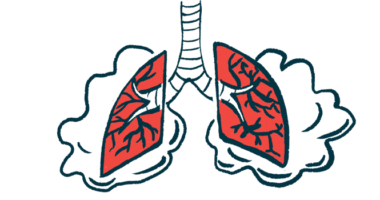Early, higher ERT doses normalizes life for girl with IOPD in pilot study
Girl eventually met all developmental milestones by age 7

Higher-than-approved doses of enzyme replacement therapy, or ERT, normalized several features of infantile-onset Pompe disease (IOPD), including motor and heart function, in the first patient enrolled in a pilot study.
The patient began high-dose ERT as a newborn, and eventually met all developmental milestones by age 7. With ongoing high-dose treatment, she currently attends school and maintains normal activities of daily living, research shows.
“This case highlights the positive outcomes in a female with IOPD who received [high-dose ERT], combined with early diagnosis and early initiation of therapy,” researchers wrote in the study “Dose-intensive therapy (DIT) for infantile Pompe disease: A pilot study,” which was published in Molecular Genetics and Metabolism Reports.
Pompe disease in caused by inherited mutations in the GAA gene that disrupt the production and/or function of the enzyme acid alpha-glucosidase (GAA). Without this enzyme, the complex sugar glycogen builds up to toxic levels in tissues, particularly in muscle cells.
Infantile-onset Pompe is severe, rapidly progressive form of the disease
IOPD is a severe and rapidly progressive form of Pompe, characterized by very low levels of GAA activity and symptoms that include cardiomyopathy (heart damage) in the first year of life.
ERT is the standard Pompe treatment, providing patients with a lab-made version of the GAA enzyme. The current standard dose is 20 mg/kg every other week, administered intravenously, or directly into the bloodstream.
Studies suggest, however, that higher doses of ERT, either at 40 mg/kg every other week or 40 mg/kg/week (quadruple the approved dose), are associated with significant improvement in clinical outcomes in IOPD patients.
Building on these findings, a research team at the University of Minnesota designed a pilot study to examine the impact of high-dose ERT, also called dose-intensive therapy (DIT), as an alternative to the standard approach for IOPD. Their goal was to optimize clinical outcomes and prevent the production of neutralizing antibodies against the lab-made GAA, which can limit the treatment’s effectiveness.
So far, the pilot study has included one female IOPD patient who was identified through newborn screening.
At 8 days of life, her GAA enzyme levels were 1% of normal, and she had elevated levels of biomarkers for muscle damage (creatine kinase), liver injury (AST and ALT), and glycogen storage (urine Hex4). An electrocardiogram showed a thickening of both of her heart’s ventricles (biventricular hypertrophy), and genetic testing revealed two different mutations in her GAA genes, each inherited from one biological parent.
She also tested positive for cross-reactive immunologic material, meaning her cells produced some GAA enzyme, making her less likely to develop neutralizing antibodies against ERT.
Patient began weekly ERT at 13 days old
At 13 days of age, she began receiving weekly ERT at 15 mg/kg, infused intravenously over seven hours. At week three, the dose was increased to twice weekly. Two weeks after starting treatment, the dose was ramped up to 40 mg/kg/week by 6 months. The goal dose was divided into three weekly treatments: 14 mg/kg on Monday, 13 mg/kg on Wednesday, and 13 mg/kg on Friday.
After two infusions, the thickening of her left ventricle normalized, followed by her right ventricle after 10 infusions. All biomarkers normalized after three months of ERT, which were maintained within the normal limits. Up to the study’s publication, there have been no signs of anti-GAA antibodies.
By age 6, she had met all developmental milestones at the appropriate ages. While her muscle bulk was normal, her muscle tone was mildly impaired. Other tests for motor function, body coordination, strength, and agility were all within the normal range, as was her heart function.
In the sixth year, ERT was gradually reduced to 4.5 hours, which was well tolerated. She has been receiving home infusions since she was 1 year old and is performing well at school.
“The patient achieved normal motor development at all developmental milestone time points throughout her first 7 years of life,” the researchers wrote.







